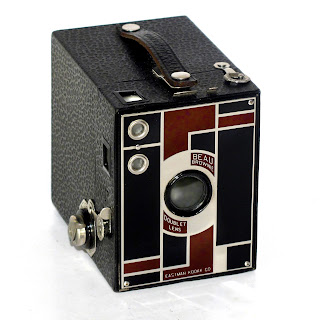20.
AUTOGRAPH
another novelty from Kodak
But what about the need for making notes on a light sensitive film?
No doubt rapid notes were made for the uncertain future in the first World War.
Any minute things could change and friends could be gone for ever.
How did it work?
Writing with the stylus obliterated some of the carbon layer outside the thin backing paper leaving light into the sensitive film area between the pictures.
Picture sizes: 6x4 cm
The very special film was called A-127.
Picture sizes: 6x4 cm
The very special film was called A-127.
For yet another decade Kodak went on and made more sophisticate Autograph cameras in larger formats .
They were a forerunners to later cameras that "burned in" the date of exposing. The small area between the pictures did not give space enough to write much more information with the primitive tools in those days.
Not all photo-labs were aware of the scribble between the precious picture surfaces. The autograph invention finally lost interest among amateur photographers.
























































